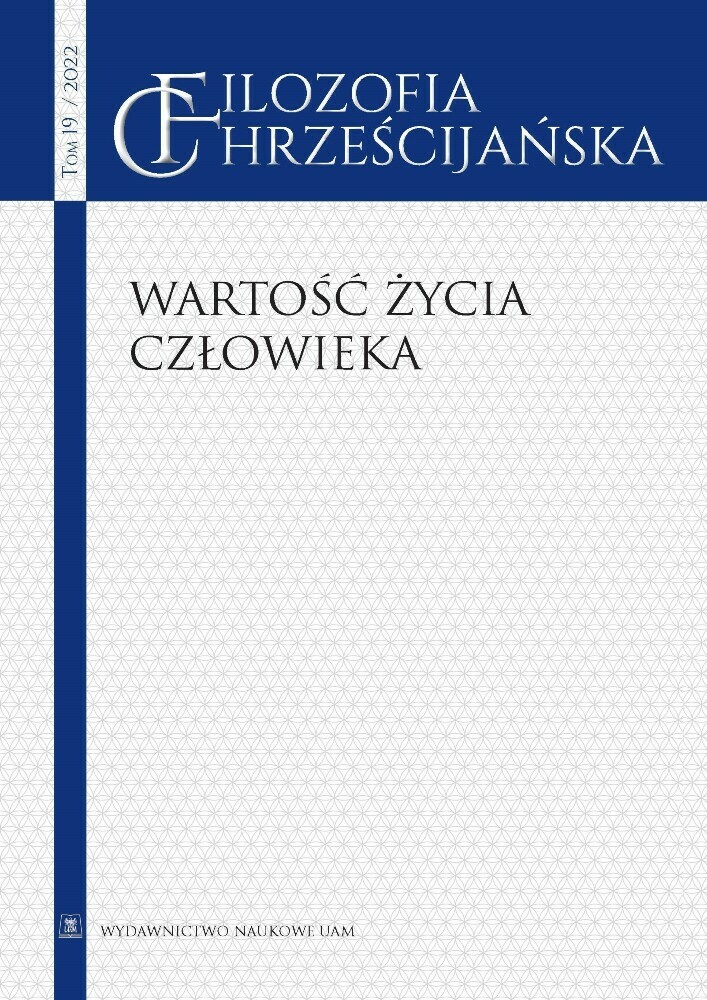Abstract
The article "Kabbalah and mysticism" is divided into three parts, in which the general understanding of Kabbalah based on mysticism is presented. The first is devoted to the general definition of mysticism, wanting to reflect on this: Is Kabbalah one? In order to be able to answer this question, the author gives voice to the more important scholars of Judaism who have dealt with this issue or are still dealing with it. They are clearly characterizing what mysticism is, they try to create an equivalent explanation of Kabbalah, thus showing its specificity. Once confirmed that Kabbalah can be considered a kind of mysticism, the author moves on to the second part, in which she presents the basic sources of mysticism of Kabbalah. It discusses the most important items of rabbinic and non-rabbinic literature, showing how the non-rabbinic is continuator of the rabbinic. The third part of the article focuses on a deeper description of the initial types of mysticism: creation, chariot and body, which form the foundation for the later mysticism of word and letter. The mysticism of words and letters is kabbalah, that is, the hermeneutical art of biblical exegesis, based on the properties of the Hebrew alphabet and language, as God's tool for knowing Him. The article is based on the considerations of such authors as: Gershom Scholem, Roland Goetschel, Joseph Dan, Charles Mopsik, Marc-Alain Ouaknin, or the controversial Moshe Idel.
References
Biblia Tysiąclecia, Biblia Tysiąclecia – Pismo Święte Starego i Nowego Testamentu, biblia.deon.pl/rozdzial.php?id=478 [dostęp: 23.02.2022].
Grecko-polski Nowy Testament, tłum. R. Popowski, M. Wojciechowski, Warszawa 2017.
Pięcioksiąg z przekładem interlinearnym z kodami gramatycznymi i transliteracją oraz indeksem rdzeni, red. A. Kuśmirek, Warszawa 2003.
Pisma. Przekład interlinearny z kodami gramatycznymi, transliteracją oraz indeksem słów hebrajskich i aramejskich, red. A. Kuśmirek, Warszawa 2014.
Prorocy. Przekład interlinearny z kodami gramatycznymi, transliteracją i indeksem słów hebrajskich, red. A. Kuśmirek, Warszawa 2008.
Talmud babiloński. Traktat Chagiga, tłum. i skomentował G. Zlatkes, wstępem opatrzył K. Pilarczyk, Kraków 2009.
Anonim, Księga Henocha, tłum. i wstępem opatrzył M.I. Prokopowicz; [http://zbory.org/pisma/iii_ksiega_henocha_2019.pdf [dostęp: 02.05.2021].
Anonim, Sh’ir Qoma, http://www.workofthechariot.com/TextFiles/Translations-ShirQoma.html [dostęp: 03.06.2021].
Dan J., The Heart and the Fountain. An Anthology of Jewish Mystical Experiences, New York 2002.
Eckhart, Kazania i traktaty, tłum. J. Prokopiuk, Warszawa 1988.
Goetschel R., Kabała, tłum. R. Gromacka, Warszawa 1994.
Halbertal M., Dweck J., Two Giants of Sepharad: Rambam & Ramban – Professor Moshe Halbertal & Rabbi Joseph Dweck, https://www.youtube.com/watch?v=mdgYzRyEgyk [dostęp: 14.07.2021].
Jelonek T., Kabała, Kraków 2020.
Idel M., Cábala hebrea y cábala cristiana, tłum. C. Kohan, Buenos Aires 2011.
Idel M., Kabała. Nowe perspektywy, tłum. M. Krawczyk, Kraków 2006.
Idel M., Kabbalah and Eros, New Haven–London [USA: Pennsylvania] 2005.
Kwiatkowski F., Czym są gnostyckie dystopie? Refleksja nad gnostycką wizją świata w badaniach nad dystopiami, https://ruj.uj.edu.pl/xmlui/bitstream/handle/item/63101/kwiatkowski_czym_sa_gnostyckie_dystopie_2017.pdf?sequence=1&isAllowed=y [dostęp: 31.05.2021].
Kowalska F., Dzienniczek Sługi Bożej, Kraków–Rzym 1981.
Mopsik Ch., Kabała, tłum. A. Szymanowski, Warszawa 2001.
Mopsik Ch., Les grands textes de la cabale. Les rites qui font Dieu, Lagrasse 2010.
Ochman J., Peryferie filozofii żydowskiej, Kraków 1997.
Ouaknin M.A., Concerto pour quatre consonnes sans voyelles, Paris 1991.
Ouaknin M.A., Rotnemer D., Le livre des prénoms bibliques et hébraïques, Paris 1993.
Ouaknin M.A., Tajemnice Kabały, tłum. K. i K. Pruscy, Warszawa 2006.
Rensoli Laliga L.D., La Escuela de Kabbalah de Gerona: una intruducción, „eHumanista”, 14 (2010), s. 247, https://www.ehumanista.ucsb.edu/sites/secure.lsit.ucsb.edu.span.d7_eh/files/sitefiles/ehumanista/volume14/rensoli%20laliga.pdf [dostęp: 22.07.2021].
Rosenzweig F., Gwiazda Zbawienia, tłum. i wstępem opatrzył T. Gadacz, Kraków 1998.
Saenz Badillos Á., Targorano Borrás J., Diccionario de autores judíos, Córdoba 1988.
Santos Carretero C., Onomástica en el Libro de Henoc: El ángel Metatron, „Hamsa” 3 (2017), https://doi.org/10.4000/hamsa.649 [dostęp: 07.07.2021]. DOI: https://doi.org/10.4000/hamsa.649
Scholem G., Kabała i jej symbolika, tłum. R. Wojnakowski, Warszawa 2014.
Scholem G., Lenguajes y cábala, tłum. J.L. Barbero Sampedro, Madrid 2006.
Scholem G., Mistycyzm żydowski i jego główne kierunki, tłum. I. Kania, Warszawa 2007.
Scholem G., O mistycznej postaci bóstwa, tłum. A.K. Haas, Warszawa 2010.
Stachewicz K., Doświadczyć prawdziwej rzeczywistości. Prolegomena do filozofii mistyki, t. 1, Poznań 2019.
Stachewicz K., Doświadczyć prawdziwej rzeczywistości. Prolegomena do filozofii mistyki, t. 2, Poznań 2019.
License
Copyright (c) 2022 Jadwiga Clea Moreno-Szypowska

This work is licensed under a Creative Commons Attribution-NoDerivatives 4.0 International License.
Autorzy
Autorzy tekstów przyjętych do publikacji w czasopiśmie Filozofia Chrześcijańska są zobowiązani do wypełnienia, podpisania i odesłania na adres redakcji umowy o udzielenie nieodpłatnej licencji do utworów, z zobowiązaniem do udzielania sublicencji CC.
Zgodnie z umową, autorzy tekstów opublikowanych w czasopiśmie Filozofia Chrześcijańska udzielają Uniwersytetowi im. Adama Mickiewicza w Poznaniu niewyłącznej i nieodpłatnej licencji oraz zezwalą na użycie sublicencji Creative Commons Attribution-NoDerivatives 4.0 International (CC BY-ND 4.0).
Autorzy zachowują prawa do dalszego, swobodnego rozporządzania utworem.
Użytkownicy
Zainteresowani użytkownicy internetu uprawnieni są do korzystania z utworów opublikowanych od 2015 roku w Filozofia Chrześcijańska pod następującymi warunkami:
- uznanie autorstwa - obowiązek podania wraz z rozpowszechnionym utworem, informacji, o autorstwie, tytule, źródle (odnośniki do oryginalnego utworu, DOI) oraz samej licencji;
- bez tworzenia utworów zależnych - utwór musi być zachowany w oryginalnej postaci, nie można bez zgody twórcy rozpowszechniać np. tłumaczeń, opracowań.
Do wszystkich tekstów opublikowanych przed 2015 r. prawa autorskie są zastrzeżone.
Inne
Uniwersytet im. Adama Mickiewicza w Poznaniu zachowuje prawo do czasopisma jako całości (układ, forma graficzna, tytuł, projekt okładki, logo itp.).

